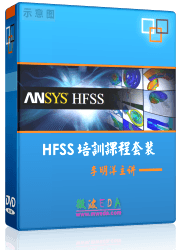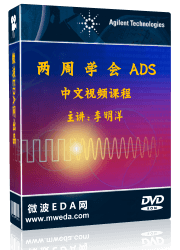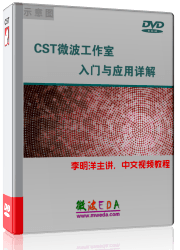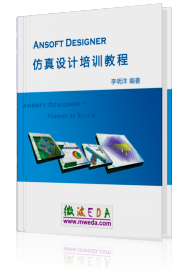|
 Ansoft Designer / Ansys Designer 在线帮助文档: Ansoft Designer / Ansys Designer 在线帮助文档:
Nexxim Simulator >
Nexxim Transient Analysis >
Transient Analysis Options
Transient Analysis Options
The transient analysis options and their default values
are listed in the table below. See Transient
Analysis Technical Notes for an explanation of the controls and
options.
The values can be changed with a .OPTIONS statement.
The syntax is:
.OPTIONS tran.option1=value1
[tran.option2=value2 ... ]
The tran. prefix causes the option to apply only
to transient analysis. Without the prefix, an option in the netlist
applies to all analyses that recognize it. See Analysis-Specific
Options for a listing of options that are used by more than one
Nexxim analysis.
In addition to the transient analysis options, you can
specify options for DC analysis to control the DC calculation done to
obtain the initial conditions for transient analysis. See Nexxim
DC Analysis Options for a listing.
Some options (in particular, abstol and reltol
) can affect both DC analysis and transient analysis. To specify
different settings for the DC initialization and the subsequent transient
analysis, use the prefix dc. for the DC settings and the prefix
tran. for the transient analysis settings. In general, option
settings with the prefix dc. affect only the DC initialization,
and settings with the prefix tran. affect only the transient
analysis. An option setting with no prefix affects both the DC and transient
analyses. However, dc.abstol or dc.reltol is applied to
transient analysis when tran.abstol or tran.reltol is
not given explicitly.
Here is an example:
.option dc.conv=3 $ Applied to DC initialization
only
.OPTION dc.abstol=4e-9 $ Applied to DC initialization
only
.OPTION tran.abstol=1e-9 $ Applied to transient only
.OPTION reltol=2e-4 $ Applies to both DC and transient
(rest of netlist)
.TRAN 1e-3 1
Nexxim Transient Analysis
Options
Option
|
Default Value
|
Description
|
abstol
|
1e-9
|
Absolute error tolerance for currents
(Amps)
|
accurate_points.num
|
0
|
Force transient analysis to place
timepoints at N equidistant points (simulate N events)
|
accurate_points.start
|
0.0
|
First accurate point
|
accurate_points.stop
|
0.0
|
Last accurate point
|
alpha
|
0.0
|
Minimum conductance of the resistor
placed in parallel with each branch (mho)
|
beta
|
0.0
|
Minimum conductance of the resistor
placed between each node and ground (mho)
|
errpreset
|
None
|
Overrides parameter defaults for
speed/accuracy tradeoff.
|
limiting
|
1
|
1=allow limiting on Newton steps
|
limiting_step
|
0.3 for nonlinear circuits.
Very large (disabled) for linear circuits.
|
Maximum absolute voltage update
allowed per N-R iteration (Volts)
|
max_frequency
|
50e9
|
Maximum frequency resolved by transient;
used for S-parameters
|
maxiters
|
10
|
Maximum number of Newton-Raphson
iterations for each timestep
|
method
|
trap
|
Integration method (parentheses
show synonyms for methods):
trap (trapezoidal)
gear (bdf2)
ndf2
|
NOISEFMAX
|
0
|
The highest frequency to analyze
for pseudorandom noise. Must be non-zero to enable transient noise analysis.
Maximum transient timestep will be set to 1/NOISEFMAX.
|
NOISEFMIN
|
|
Lowest frequency to analyze for
noise. Below NOISEFMIN, noise power density is constant.
1/NOISEFMIN must be less than the transient analysis stoptime. Not
used currently.
|
NOISESCALE
|
1
|
Scale factor
|
NOISESEED
|
0
|
Random number seed. Using the same
seed generates the same set of random values
|
NOISESTART
|
0
|
Noise start time
|
NOISETMIN
|
0
|
Noise minimum transient step. Not
used currently.
|
num_frequencies
|
500
|
Number of frequencies resolved
by transient plus DC; used for S-parameters
|
outputstart
|
0.0
|
Time to start saving results to
a file
|
relref
|
allocal
|
The RELREF argument controls
how the norms are computed for the delta check, function check, and
LTE checks. Point-local means the norm is local to the signal
and to the time step. Local means the norm is local to the signal
but considers the maximums over all time-steps. Global means
the norm is global for the entire circuit over all time-steps. The settings
for relref are:
pointlocal = Point-local for delta, function,
and LTE
alllocal = Local for delta, function, and
LTE
sigglobal = Local for function, global for
delta & LTE
allglobal = Global for delta, function, and
LTE
|
reltol
|
1e-3
|
Relative error tolerance for currents
and voltages
|
read_state
|
None
|
Read initial state from the specified
file
|
result_as_initial_guess
|
1
|
1=Use of the result from each step
in a sweep as the initial guess for the next sweep step.
|
sig_storage_off
|
0
|
1=Skip time domain probe data storage
|
skipResult
|
0
|
By default, transient results are
stored into the SDF file. For the Eye Scope, setting skipresult to 1
allows the user to see the eye without storing all the data.
WARNING: Nexxim does not check that there is an
Eye Scope present, risking loss of data.
|
step
|
None
|
Suggested transient step size
|
stop
|
None
|
Stop time
|
stop_pwl_times
|
1
|
0=Transient will not stop at the
data points in any PWL source
1=Transient will stop and start backward Euler at
every point specified in all PWL sources
2=Transient will stop at every data point in all
PWL sources, but will maintain the current integration order.
3=Transient will stop only at data points that deviate
from the extrapolation using the previous two points by more than the
reltol and abstol specified for transient.
|
rmax
|
10
|
Factor for calculating maximum
timestep
|
tmax
|
stoptime/100
|
Maximum step size
|
trtol
|
7.0
|
Ratio of transient analysis tolerance
to Newton-Raphson tolerance, for timestep calculation
|
update_jacobian_period
|
3
|
Number of Newton steps per Jacobian
update
|
write_final_state
|
|
Write the final values of node
voltages to specified file.
|
write_initial_state
|
|
Write the initial (DC) values of
node voltages to specified file.
|
vntol
|
50e-6
|
Absolute error tolerance for voltages
(Volts)
|




HFSS视频教程
ADS视频教程
CST视频教程
Ansoft Designer 中文教程
|
|